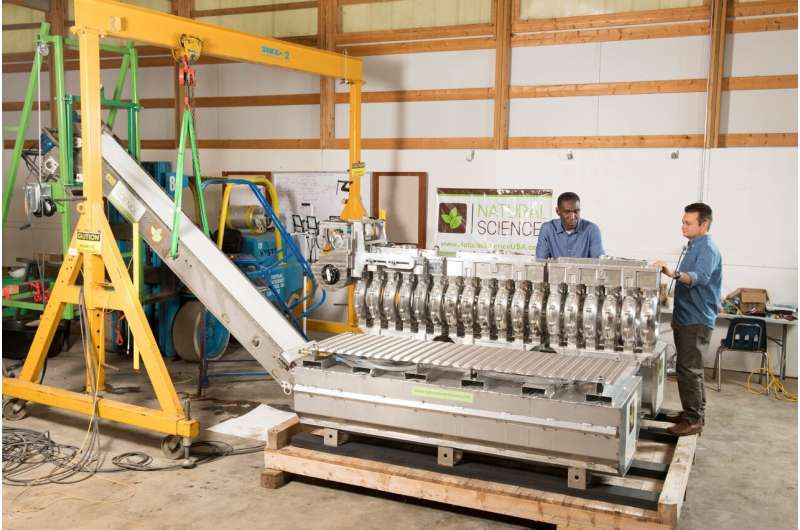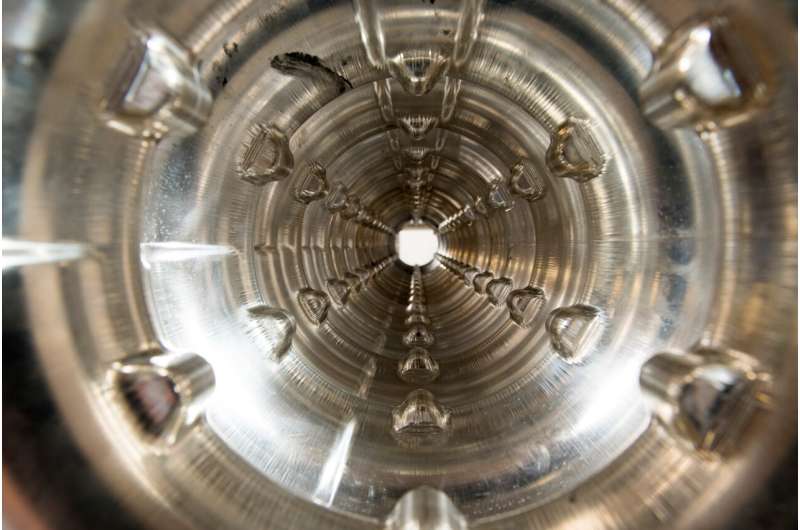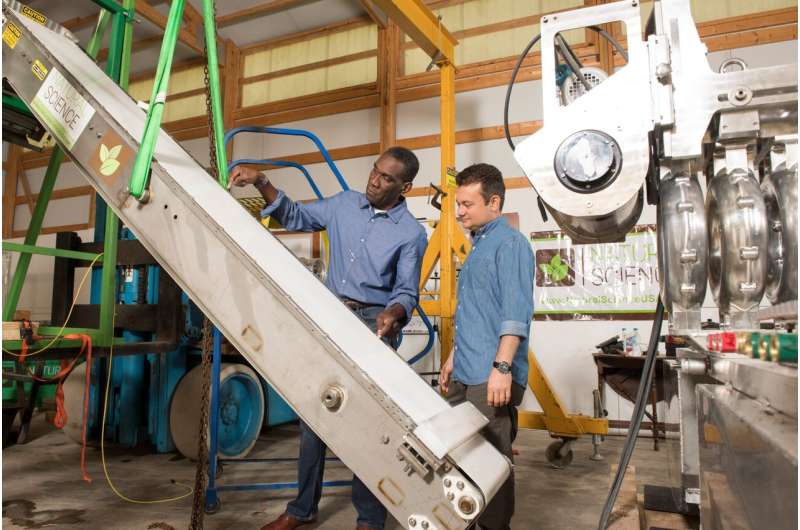Arden Warner explains his electromagnetic oil spill remediation technology. Credit: Reidar Hahn, Fermilab
Many Fermilab followers are aware that Fermilab's Office of Partnerships & Technology Transfer licensed the laboratory's electromagnetic oil spill remediation technology to Natural Science LLC in 2015. This agreement enabled Natural Science, led by physicist and inventor Arden Warner, to design and develop a novel electromagnetic technology for cleaning oil spills. A key milestone of the agreement was to produce the first prototype and then move toward commercialization.
That prototype is now here. The concept that started as demonstrations with water, oil and magnetite in a 9-ounce cup has developed into a full-scale device. With Natural Science's permission, we are sharing some images of this full-scale prototype below.
As you can see, the technology has come a long way from the permanent magnet demonstration videos you may have seen years ago when this was a mere concept. The system includes a scalable string of floating solenoid modules feeding a magnetic ramp and separator apparatus. Much engineering has gone into making these components work together as an oil spill solution.
Earlier this month, the Natural Science equipment had its first large-scale test at Ohmsett— the National Oil Spill Response & Renewable Energy Test Facility, located in Leonardo, New Jersey—a facility, where among other things, oil spill remediation ideas are evaluated and developed.
This patented concept shows how basic research like that done at Fermilab inspires and leads to spinoff ideas with real-world applications. To discuss how you might protect your ideas and potentially bring them to market, contact the Fermilab Office of Partnerships & Technology Transfer.
-
This shows a view down the center of the magnet module. Credit: Reidar Hahn, Fermilab
-
The fluid that arrives at the output of the e-boom system is collected by a magnetic ramp. The ramp is designed to couple with the last solenoid magnets in the sequence. The ramp has a moving conveyor belt, and under its surface there is a moving layer of magnets. These two are independently driven and therefore can move either at the same rates or at different rates. The entire ramp is situated at an angle to the e-boom module to lift the magnetized mixture from the water. Due to the angle of inclination of the ramp system, the belt speed, and the magnetic force at the belt, any excess water slides off the belt system while the magnetized oil is delivered to a separation container. Credit: Reidar Hahn, Fermilab
Provided by Fermi National Accelerator Laboratory

























